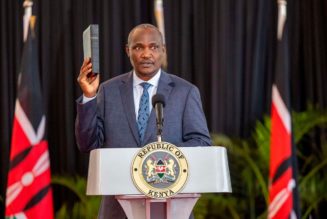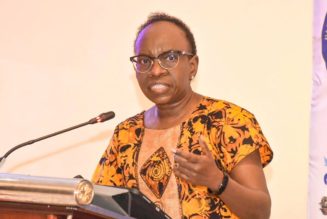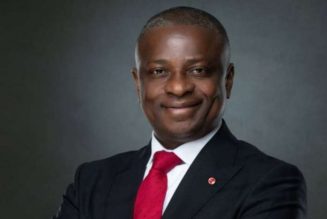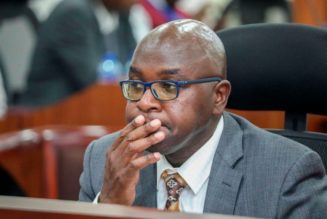
M-Pesa CEO, Sitoyo Lopokoiyit. ILLUSTRATION | JOSEPH BARASA | NMG
Sitoyo Lopokoiyit has been the CEO of M-Pesa Africa since April 2021, overseeing the mobile money platform’s operations across eight markets on the continent, Ethiopia being the latest entry.
He sat with Business Daily to reflect on what it has been like occupying the apex position of Africa’s largest mobile money platform by customers and transaction value, as well as his game plan for the next phase of growth.
You’ve been in this post for slightly over two years. What have been your priorities and what do you feel has been achieved?
I think the beauty about M-Pesa Africa is seeing ourselves as Africans and seeing ourselves as one M-Pesa. We were seven M-Pesas, now we’re one M-Pesa and that is a fundamental shift. So the standardisation of the platforms has been a huge milestone for us.
But more importantly, I think for us it is what we’re doing to drive financial inclusion and financial health across the markets. Kenya is more advanced but in certain places like the DRC it’s the basics when rolling out the systems, so I think the rollout of the Super App is one of the fundamental things we have done.
But then, again, M-Pesa is a lot about our purpose. Everything we do is measured on its capacity to make an impact in the society and improve lives. If it ticks those things we just do it. That is really important because I strongly believe that if the society is successful we’ll be successful.
What have been the misses in that journey?
Not many, but could we have done certain things faster? I think so. Could we have reacted differently in different countries? Yes. We’ve made mistakes making projects that didn’t work, that’s okay because the team learns and moves on.
For us mistakes are really part of this agile journey that we’re in where we mess up and move on after picking our lessons.
You’re operating in eight African markets. What informs the choice of the country that you move into and have you lined up plans to explore additional markets?
Right now we are in the markets where we have the GSM (Global System for Mobile Communications) network; that has been the plan. All the eight markets are where Vodacom has established a GSM footprint.
Are we going to move to other countries beyond that? Potentially. But right now there’s so much to be done within our footprint, so there’s more focus on building and scaling up our present deployments.
Let’s talk about Ethiopia, your latest market. What trends are you seeing in terms of uptake and what lessons have you picked along the way?
We’ve taken the best of all the runnings of M-Pesa to Ethiopia and this includes the right talent, all the lessons picked in our years of operations, system upgrading and all so they have the best of it. That is the first thing.
The second is that it’s a big market of 100 million plus people. Third is that this is a long-term project. Even in Kenya, M-Pesa was not successful in one year while in Tanzania it took three years to scale so we need to give it patience.
The team that is there is working on understanding the use cases because like the way we have the ‘send money home’ as a use case here doesn’t mean that it’s the use case there.
So we’re trying to understand what the Ethiopians want, the challenges they face, and so on and so forth. Of course you can’t do the lending at first because you don’t have the data.
But from there we’ll be moving to tailoring the platform to provide the products and services that are needed but the strategy is the same. We are going to focus on consumers, businesses and on the developer community. Those three key pillars do not change, whichever market we go out to.
What new innovations has M-Pesa lined up to compete with banks and other payment service providers who are increasingly enhancing their mobile money capabilities?
First of all, I wouldn’t say it’s competition. It is just that everybody is trying to digitise cash. And if you look at what the banks are doing, it’s all connected to M-Pesa, so we’re a platform that is enabling the banks do it.
So, it means they’re building an innovation on top of our plan, which is a great thing. We should never be worried about that, we should encourage it.
I don’t see it as competition, I see it from the perspective of M-Pesa expanding the base. The more people come on board, the better for us.
Here in Kenya, we’ve seen reports of business outlets increasingly ditching the use of Till Numbers to reduce their visibility in an attempt to dodge taxation. What impact has this had on the M-Pesa business?
It’s a perception that people have. That thing went out of control when the narrative spread and people got scared. But to be honest, nothing has changed from how we’ve been operating. In fact, if you look at the overall business for merchants, the uptake of Till Numbers is actually growing. So, from where I sit, the narrative is more perception than reality.
A majority of your customers complain about the high cost of transacting on the platform when they compare with what your rivals are offering. Is it possible to revise the charges and still make reasonable margins?
51 percent of transactions on M-Pesa are actually free and you’ve seen the rest gradually reduce. I mean, if you look at the trend, the transaction fees has been going down.
We’re more focused on creating a shared value rather than looking at the transactions.









